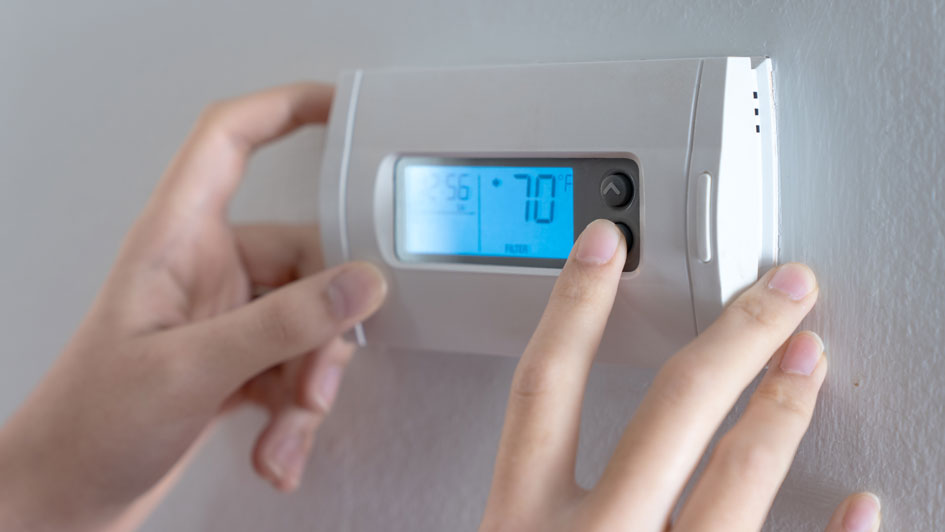
We all like saving money on our monthly utility bills, but it turns out there’s a way to lower energy use, even when you're not even home.
The secret is your thermostat. By using automatic schedules, you can tailor the temperature to your needs. That means you can have different temperature settings for when you’re at home, away or even when you’re sleeping.
With a few simple adjustments, you can enjoy comfy temperatures while cutting down your energy bills. Here are some ways your thermostat can be a source of energy savings:
While at Home
Pretty much whenever you're home, you want comfortable temperatures. That’s why it’s best to set your thermostat lower in the summer while you are in the house to make the most of the cool air.
But the most energy-efficient temperatures for the summer is in fact anywhere between 78 and 80 degrees Fahrenheit. This way, you can stay cool while keeping your energy bill more manageable.
While Gone
When it comes to setting the temperature for when you are out of the house in summer, the majority of homeowners will set the thermostat higher for while they're gone.
If your home is in a shady spot in a cooler climate, you can set the thermostat to higher temperatures like 88 degrees while no one is home before you adjust it back to the sweet spot of 78-80 degrees when you or a family member return. This way, your air conditioning system isn't working around the clock to keep an empty house cool.
While Asleep
To enjoy a good night's sleep during the summer, you want a temperature that's nice and cool. You should try and keep things between 68-72 degrees Fahrenheit. There's less risk of getting too hot or too cold at some point overnight.
Other Ways to Use Less Energy:
- Smart thermostat installation: Using a smart thermostat in the summer can lower energy costs since it can plan your temperature adjustments according to your lifestyle and personal preferences. It'll take care of making changes while you are home or sleeping, before allowing it to warm up when no one is around. With models like the Lennox iComfort, you are able to adjust settings and schedules through your smartphone, tablet or laptop. Scheduling smart thermostat installation in your Houston home is an effortless way to set the correct temperature whether you're at home or across the country.
- Replace current equipment with a newer HVAC system: A high-efficiency HVAC system is another great option for long-term energy savings. If a system boasts high energy efficiency, you can also count on lower utility bills since more efficient equipment requires less energy to reach your preferred temperatures. Air conditioning installation in Houston is a great way to beat the heat in the summer.
- Schedule annual AC maintenance: Investing in or ignoring regular air conditioning maintenance in Houston can have a significant impact on your utility bills. If you stay on top of cleaning key components like the coils, checking for damage and clearing ventilation of dust and debris, you may notice your HVAC system perform better during day-to-day use.. More efficient operation reduces strain on the unit and lowers operational costs, resulting in lower energy usage and subsequently, smaller bills.
- Clean or replace the air filter on a regular basis: Regularly changing the air filters in your HVAC system saves money by keeping airflow as smooth and consistent as possible. When filters are old and less effective, air conditioners have to work harder, and the added strain may impact the system’s life span and result in breakdowns.
- Check if you have enough insulation in the attic: Insulation is a vital part of maintaining an energy-efficient home, securing the hot air outside and the cool air inside through summer. The North American Insulation Manufacturers Association (NAIMA) offers an official recommendation stating homeowners in souther states should have at least 13-14 inches of insulation, while states further north need 16-18 inches.
- Check your air ducts: Leaky ductwork can raise your energy bills much more than 20 percent, plus it can affect equipment such as your water heater, clothes dryer and other appliances throughout your home. Watching for signs of leaks and sealing them can help with both these issues.
- Seal all other leaky spots in your home: Finding and sealing any remaining leaks in your home with caulk, foam sealant or weather-stripping can help keep it cooler on hot summer days. You should also check for any gaps around windows, doors and even outdoor fixtures. Devoting time and effort to sealing leaks now can help you save a lot in the long run.
